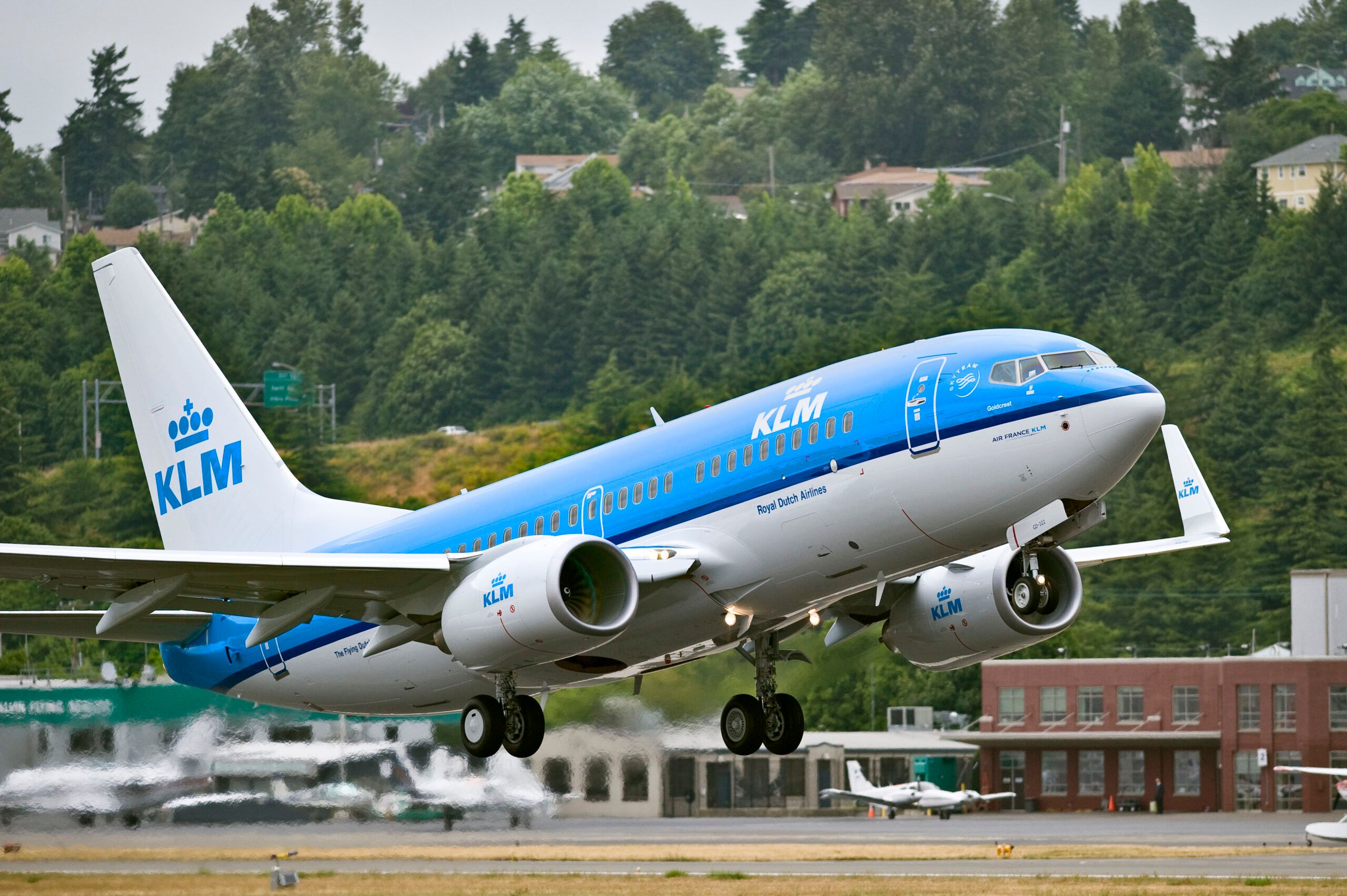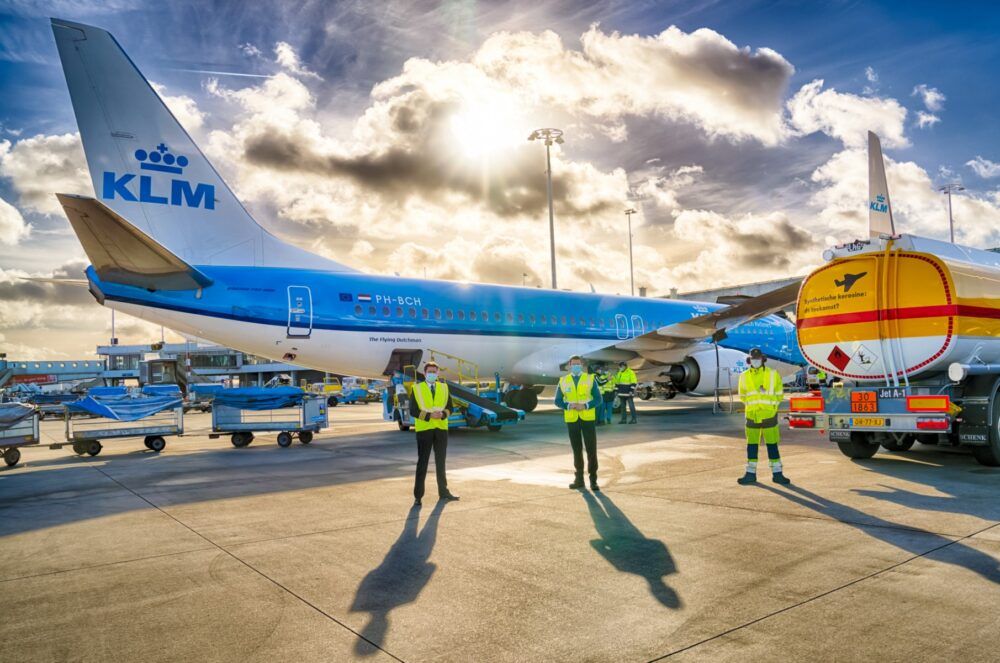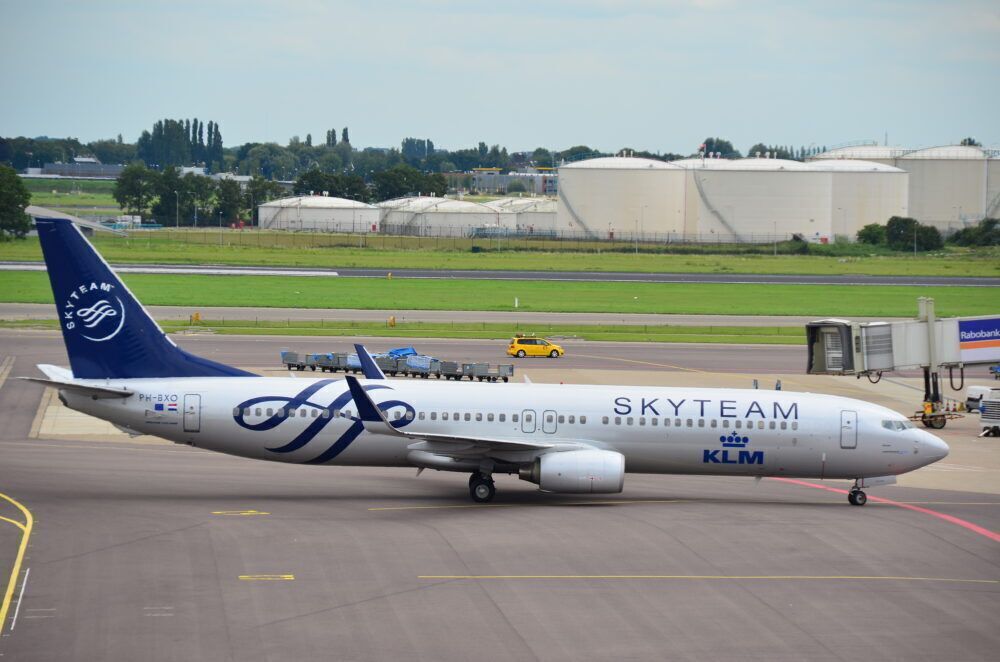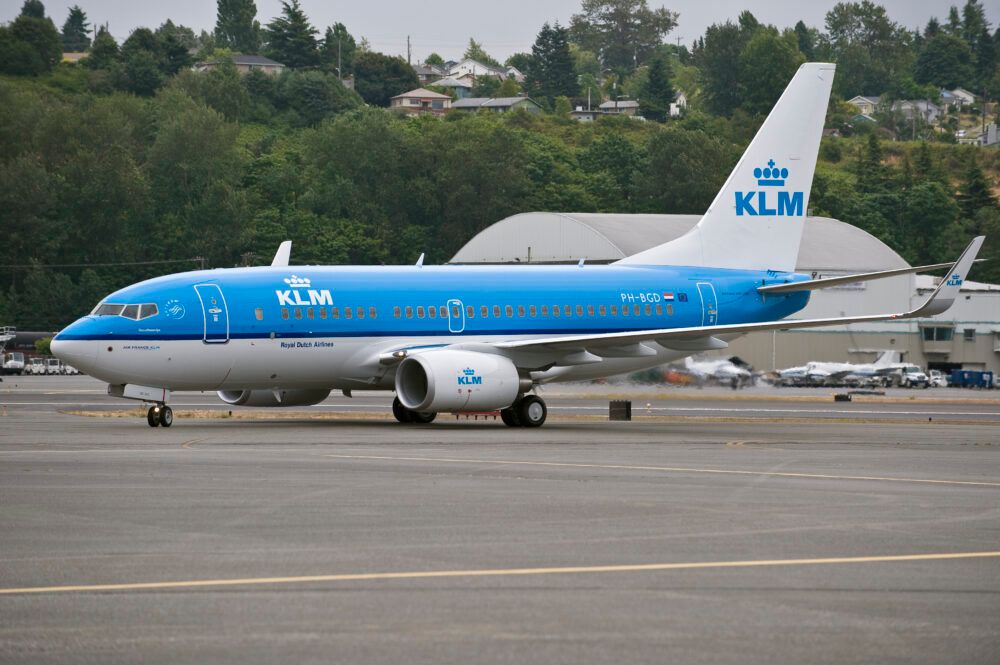KLM’s ambitious carbon reduction targets will only be achieved with ongoing fleet renewal. Its aging fleet of narrowbody Boeings is dragging its statistics down, and with many of the members now well over 15 years old, they’re ripe for renewal. CEO Pieter Elbers says the airline is studying both the 737 MAX and the A320neo family for their replacement. Which way will it go?
Targeting fleet renewal
KLM is well known for being committed to its climate goals. The airline was the first to fly with synthetic kerosene onboard back in February, and launched the world’s first voluntary carbon reduction scheme for airfreight at the end of last year. Before COVID, it was in the midst of introducing biofuel at Schiphol, and even campaigned for passengers to fly less.
This catalog of climate initiatives is all part of the airline’s goal to slash carbon emissions by 50% from 2005 levels by the year 2030. It has already achieved a 30% reduction, and is part of the European-wide initiative to meet net-zero carbon emissions by the year 2050.
However, despite the airline’s best efforts, more needs to be done. In an interview reported by Skift, CEO Pieter Elbers noted that there was a key element required if KLM was to meet its carbon reduction targets. He said,
“Fleet renewal is the quickest, most feasible thing to do.”
While the pandemic has allowed KLM to speed up retirements of some of its most inefficient jets, including the 747, very little progress has been made on the narrowbody side of things. This is something the airline is seeking to change.
Stay informed: Sign up for our daily and weekly aviation news digests.
Studying the options
The KLM CEO noted that the airline would consider both the A320neo family and the 737 MAX family as potential replacements for its aging fleet. Presently, KLM relies on the 737 NG for its narrowbody needs, with a total of 49 of the type in its fleet.
Of these, the 737-700s are the youngest, with an average age of 10.7 years. The -800s, the most numerous with 31, are 14.5 years, while the five -900s are the oldest, at 19.3 years average.
However, within those sub-fleets, there are some wide variations. For example, the oldest 737-800 is 22 years old, while the youngest is not yet two years old. Likewise, the -700s range from nine to 12.6 years of age, while all the -900s are between 17 and 20 years old.
Switching to a new generation aircraft would immediately save around 15% of carbon emissions compared to these older aircraft. While KLM has never operated an Airbus narrowbody, its compatriot, Air France, has always relied on these aircraft for its short-haul needs. Could its partner airline’s affinity with the European manufacturer be enough to sway it away from Boeing?
Which way will KLM go?
The A321neo, in particular, could be a capable replacement for the old -900s. Indeed, amid the lengthy grounding of the 737 MAX last year, KLM was noted to be leaning in this direction.
However, a switch to Airbus would require something of a retooling, adding expense and complexity to the fleet. It would also add issues for pilots during the crossover period while the airline winds down its 737s and starts taking deliveries of the Airbus. Last-minute equipment swaps could be difficult to manage.
As such, our money is on the 737 MAX. It’s a natural replacement for the NGs in the fleet, and right now, Boeing is likely to be offering some tempting deals as it seeks to garner more votes of confidence for its newly ungrounded narrowbody. Elbers has previously noted his ambition to move to an all-Boeing fleet, something that is moving ever closer as the A330s begin retiring. To swing back to Airbus at this stage would be a surprise to everyone.




